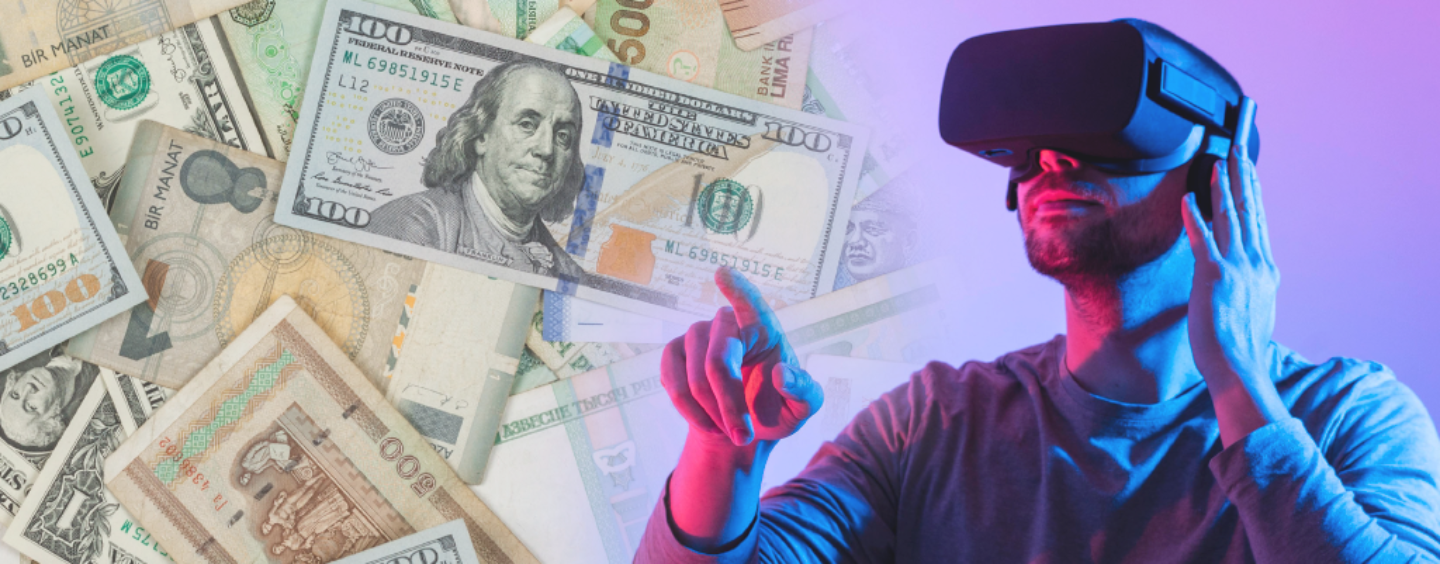In the virtual world of the metaverse, people don’t just visit – they inhabit. It’s a place where they can be whoever they want to be and do whatever they want.
The term ‘metaverse’ was first coined in a book by Neal Stephenson called Snow Crash. In the book, the metaverse is a 3D virtual world generated by computer code. It is where people can meet and interact with each other and where businesses can operate.
The book was published in 1992, and at the time, the idea of a metaverse seemed like science fiction. Fast forward to today, the novel is not so sci-fi now, with many companies investing and diversifying their portfolio to virtual reality.
The most recent incarnation of the metaverse is being built by companies like Microsoft, Google, Roblox, and Epic Games. These companies are creating digital worlds that will allow users to interact with each other and with computer-generated objects in a realistic way.
So perhaps the younger adults are more well-versed with the metaverse? Not quite. According to Mike Proulx, VP and Research Director of Forrester, fewer than 1/4 of United States online adults are familiar with Metaverse. Even in first-world countries such as Germany, only 14 percent of online adults would say they are familiar with Metaverse.
Less than half (44 percent) of the most tech-savvy survey respondents were familiar with metaverse, said Anjali Lai, Senior Analyst at Forrester and author of “The Future Of The Empowered Consumer In The US”.

image via Pixabay
Monetizing in the metaverse: a distant possibility or already in proximity?
JP Morgan has opened a virtual lounger called “Onyx lounge” in the blockchain-based world of Decentraland. Users can buy virtual plots of land using non-fungible tokens (NFT) and make transactions using crypto-currencies backed by the Ethereum blockchain.
Onyx lounge operates just like a bank in the real world, facilitating payments, foreign exchanges, trading, and safekeeping of financial assets.
According to Hamza Fareed Malik of Business Insider India, American Express (AmEx) is considering card payments, ATM services, and other banking services in the metaverse. The company also wants to trademark a digital marketplace for NFT transactions and other digital and blockchain assets.
Even payment services powerhouse Mastercard and Visa have joined the party, providing payment cards for cryptocurrency-linked transactions and setting up advisory groups to help their clients use cryptocurrencies.
Perhaps a little closer to Asian shores, HSBC has its foot in the door by recently entering “The Sandbox” Metaverse, buying a plot of land to develop it to engage with sports, e-sports, and gaming. Chief Marketing Officer at HSBC Asia-Pacific Suresh Balshi said, “The partnership with The Sandbox will enable the bank to create innovative brand experiences for new and existing customers.” Sandbox already has affiliations with global brands such as Gucci, Warner Music Group, and Adidas.
Malaysia-headquartered Hong Leong Bank has recently called up-and-coming disruptors to participate in a “hackathon” to develop inventive ideas and solutions to improve the digital banking sector. They would have to think from a client’s perspective, offering personalized experiences that provide convenience and peace of mind in the metaverse banking world.
Winners of the “hackathon” will get a chance to work with and be mentored by leading executives in Hong Leong Bank and key figures in the Malaysian metaverse industry while also getting cash prizes of up to RM 10,000.
Meanwhile, during the recent Singapore Fintech Festival 2022, Vincent Fong, Asia’s Chief Editor at Fintech News Network, spoke to Robert Clarkson, Chief Revenue Officer at Payoneer Global Inc, about his thoughts on the metaverse.
In the video below, Clarkson said that the metaverse isn’t much different than some of the models that already existed. It is an advancement in models found in gaming consoles such as the PlayStation and Xbox.
How does metaverse improve the banking sector?
It does not matter who does it first but who does it best. Nobody remembers who invented the first phone, nor does it matter. The first or second bank in the world to implement elements of the metaverse will not gain an obvious edge over the latecomers. Clients always look for newer and better products or services to offer convenience, safety, and reliability.
Traditional banking goes through stringent regulations and is often associated with stability, and people want stability regarding their money.
Risks are often minimized or avoided in deposit placement or investment, so how does something so new and unknown to most of the public as the metaverse associate itself with banking? Even with industry-leading companies being the early adopters, questions remain about whether consumers will follow suit.
Jim Marous, Co-Publisher of The Financial Brand, host of the Banking Transformed podcast, and Owner/CEO of the Digital Banking Report, reported that among organizations surveyed, 47 percent believe that by the year 2030, virtual, augmented 20 percent of consumers will use reality as an alternative channel for the daily transaction.
In the same year, 52 percent said that blockchain and digital ledger technology would be used by more than 75 percent of financial institutions, and 33 percent believed that cryptocurrencies and digital fiat currencies would be used more frequently than cash.
Indeed, time is needed by both suppliers and consumers for gradual adoption, and adoption needs to be supported by consumer-centric approaches and solutions by suppliers.
Michael Abbot, the Senior Managing Director of the Global Banking Lead at Accenture, talks about how metaverse can help financial institutions reshape employee and customer experience and invent new products and services.
With AR and VR technology, onboarding remote workers can be simple and fun in many ways to create a sense of belonging and improve staff retention. Customers can check balances, pay bills and make transactions using AR or VR channels.
Abbot also talked about how an avatar at home can provide the high-touch services customers have been looking for, conducting financial planning sessions, product recommendations, and portfolio reviews. Banks can further solidify their role as safeguards for digital assets like cryptocurrency and NFT’s and physical assets like real estate properties.
The trillion-dollar market
Goldman Sachs has predicted that the metaverse has the potential to be a multi-trillion opportunity. One of the investment bank’s analysts, Eric Sheridan, said, “We look at the digital economy today, which is roughly about 20 percent, 25 percent of the global economy. We see the digital economy continuing to grow, and on top of that, we see a virtual economy that will grow within and alongside this digital economy. That’s how we came up with the number for various outcomes of anywhere from US$2 trillion to US$12 trillion, with US$8 trillion at the midpoint of all potential outcomes.”
It is a no-brainer for financial institutions to continue investing resources that could help them gain an edge. But they must be conscious about adopting their approach and not just hop on the hype train.
As Abbot says, “The most important thing for banks to do is to form a metaverse strategy that aligns with your brand and your purpose. Just being there for the sake of being there is not a strategy.” He further added, “Have a purpose and be in control. Don’t let your metaverse presence become an uncontrolled space; no more than you would let your physical branch become an uncontrolled space.”
With so much at stake and up for grabs, few would bet against the metaverse from completely revamping the entire banking and financial.








